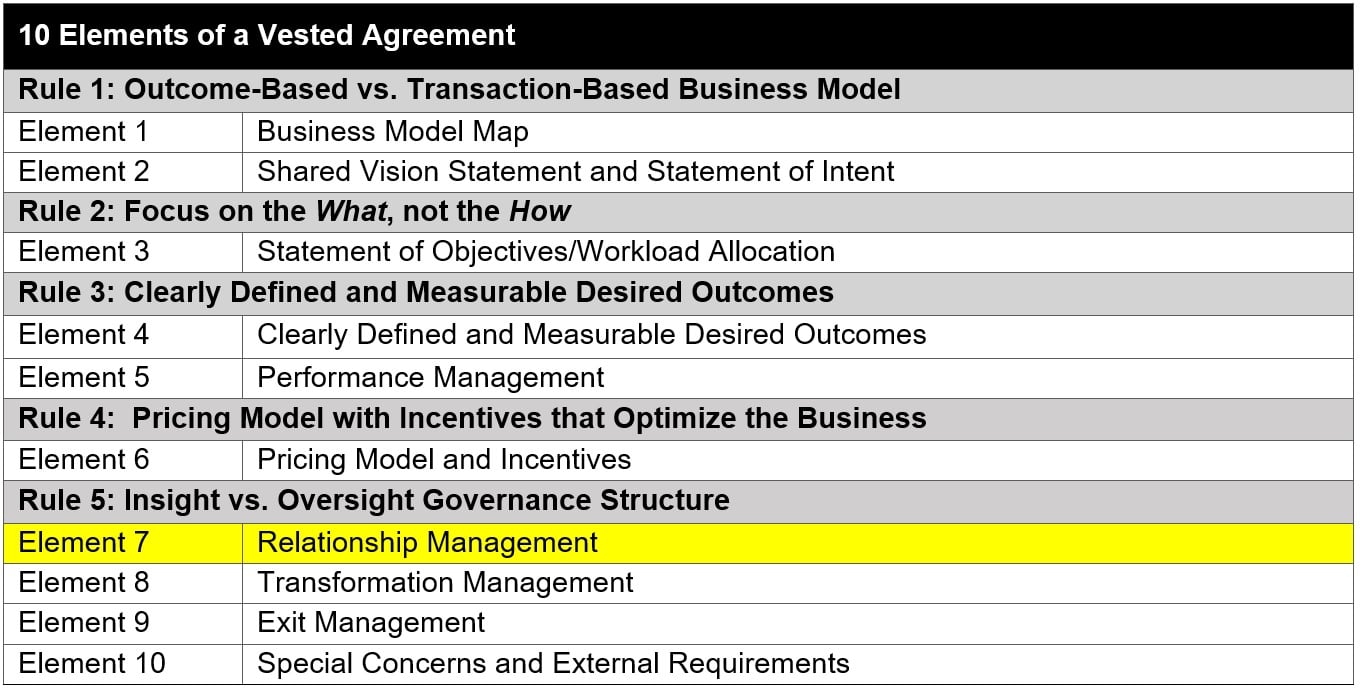Inside Supply Management Magazine
Strategic Contracts: Insight Versus Oversight Governance

(Editor’s Note: Inside Supply Management® Weekly recently published “Implementing a Successful Supplier Sourcing Contract,” which highlighted why strategic supplier relationships should use all of the tools in the contracting toolkit. This article is the eighth in a series that explores each of the 10 elements that craft successful buyer-supplier contracts, as described in the book The Vested Outsourcing Manual. This article discusses Rule 5, Element 8 — Transformation Management.)
By Kate Vitasek
Following the first four Vested rules helps the parties reach a collaborative, win-win agreement. But keeping the agreement aligned and smoothly operating hinges on Rule 5, which creates a sound governance structure based on insight, not oversight. The main thing to keep in mind is to manage the business and the relationship, not the service provider or supplier.
Four components are essential to a sound governance structure, including Element 8 — Transformation Management.

Including transformation management in a supplier relationship is essential because one thing is certain: Change is constant because “business happens.” Element 8 provides the framework that helps an organization manage the various aspects of change. A key theme of Element 8 is acknowledging that the parties are doing things differently and probably aren’t operating in familiar comfort zones. Managing transformation — including transitioning from old to new as well as change management once the new agreement is up and running — is often difficult and complex to implement.
The transformation-management element of an agreement should contain the following components, each targeted for different types of transformation. It should:
1) Document a common understanding of how the initial transition scope of work is managed, known as initial transformation management. This will ensure that the relationship gets off to a solid start by establishing a clear understanding of the transition.
2) Include philosophies for driving overall transformation initiatives — a continuous innovation-management process. This part of the agreement is designed to establish protocols and processes for how the company will manage ideas that the parties should agree upon and invest in so they can achieve their desired outcomes.
3) Include formal change-control procedures that update and manage changes to the actual agreement; this is also referred to as contractual document management.
Also, the agreement should contain a process for managing day-to-day continuous improvement efforts or business problems that arise.
The final articles in this series cover the last two elements of Vested Rule 5 — establish an insight, rather than oversight, governance structure. Up next is Element 9, on developing a comprehensive exit-management process.
Kate Vitasek is an international authority on the Vested business model for highly collaborative relationships. She is the author of six books on the Vested model and a faculty member at the University of Tennessee in Knoxville, Tennessee.

